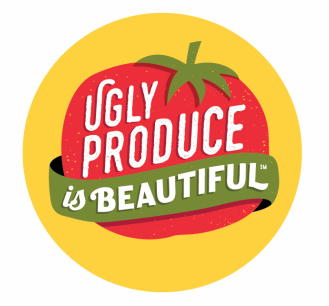 by Sarah Phillips, Co-CEO and founder, www.UglyProduceisBeautiful.org, @UglyProduceisBeautiful and @food I'm sure most of have a vegetable peeler in our kitchen drawer. We're so used to peeling vegetables and throwing the peels away, that most of us may not know how nutritious they are. Mounds and mounds of vegetable peels and nutrition in the garbage! Besides Ugly Produce is all twisted and gnarly, making them difficult to peel - so the solution is to give up and throw away your vegetable peeler rather than throwing away most of the vegetable's vitamins, fiber, and antioxidants, that as the saying goes, "can do your body good!" Did you know that in most vegetables, the nutrition is in the peels. I don’t know when the cooking technique of peeling produce came into being with such a vengeance, but it is a common recipe instruction in American recipes. I know that many of us cooks and bakers have been taught to peel our carrots, potatoes, apples, cucumbers, beets, zucchini, eggplant, for examples, making it a laborious and time consuming affair, not to mention causing endless vegetable peel food waste. Maybe it stems from an old societal message for us to get rid of the dirt in our homes, and to distance ourselves from nature. The apple or potato peeler, known also as the vegetable peeler, was thought to have been invented in the 19th Century. http://inventors.about.com/od/kstartinventions/a/kitchen.htm Now I am beginning to see recipes for how to reuse the peels. But what about if we think another way - what if we just threw away our vegetable peelers, and didn’t peel our produce at all. Especially when cooking with Ugly Produce, with all of its twists and turns - it's going to be hard to peel some of these beauties from nature. What if we also buy organic and local, so we can help eliminate some of those fears about chemicals and waxes placed on from industrial farming? Maybe the vegetable peeler with an 'x" across it should be my new logo? Some Important Facts: -In the potato, there is a striking difference between peel and flesh. Did you know that the potato’s skin contains approximately half the total dietary fiber? -Apple peels are naturally rich in nutrients and fiber. In fact, peels contain 2−6 times more nutrients and insoluble fiber than the flesh of apples. -What many people don't know is most of the beneficial nutritional value of cucumbers stems from the peel. -A kiwi's fuzzy skin is also edible - it contains more flavonoids, antioxidants and vitamin C than the insides - and double the fiber. -Eggplant skin is also rich in chlorogenic acid, a phytochemical that boasts antioxidant and anti-inflammatory properties, and also promotes glucose tolerance. Although the eggplant interior contains chlorogenic acid, it's much more prevalent in the skin. -Researchers found that mango skin contains properties similar to resveratrol, which helps burn fat and inhibits the production of mature fat cells. Mango flesh extracts were also tested, but did not produce the same results, which suggests that one needs to eat mango skin in order to get this beneficial property. -All watermelon contains citrulline, which has antioxidant properties and converts to arginine, an essential amino acid that is beneficial to the heart, immune system and circulatory system. But most of that citrulline is found in the rind. Eating a rind might sound unappetizing, but it can be pickled (like a cucumber), or simply sautéed and seasoned. Or throw it in a blender with the watermelon flesh, and add some lime. -The University of Illinois Extension warns that you should always prepare zucchini with the peel intact, since the peel is the most nutrient-dense portion of the vegetable. (http://healthyeating.sfgate.com/nutrients-found-zucchini-6989.html) -Carrot peels are edible, even though a carrot's peel and its flesh are the same color is an indicator that the two parts of the vegetable have a similar nutritional value. However the highest concentration of phytonutrients is found in a carrot's skin or immediately underneath. http://www.livestrong.com/article/518814-should-carrots-be-peeled-or-are-they-more-nutritious-with-the-peel-left-on/ Only peel them if the skin is bitter, which happens more frequently in older carrots - so do a taste test - but the lesson here is to not don’t peel vigorously. . When carrots are treated with pesticides as they grow, the peel holds the majority of the chemical. Note that even if you wash them thoroughly, the pesticides are still present in the food. And if you chose to peel your produce, use the peels in making vegetable stock, along with bits from other vegetables. Mushroom stems, corn cobs, potato peels, etc. can all be used in stock as long as you strain it after cooking. Research: http://www.stack.com/a/fruit-vegetable-peel http://www.livestrong.com Join UPIB and follow @UglyProduceIsBeautiful on Instagram.
1 Comment
|
UPIB BLOGWelcome to the Ugly Produce is Beautiful Blog where we discuss important topics. Archives
November 2016
Categories |
|

 RSS Feed
RSS Feed
